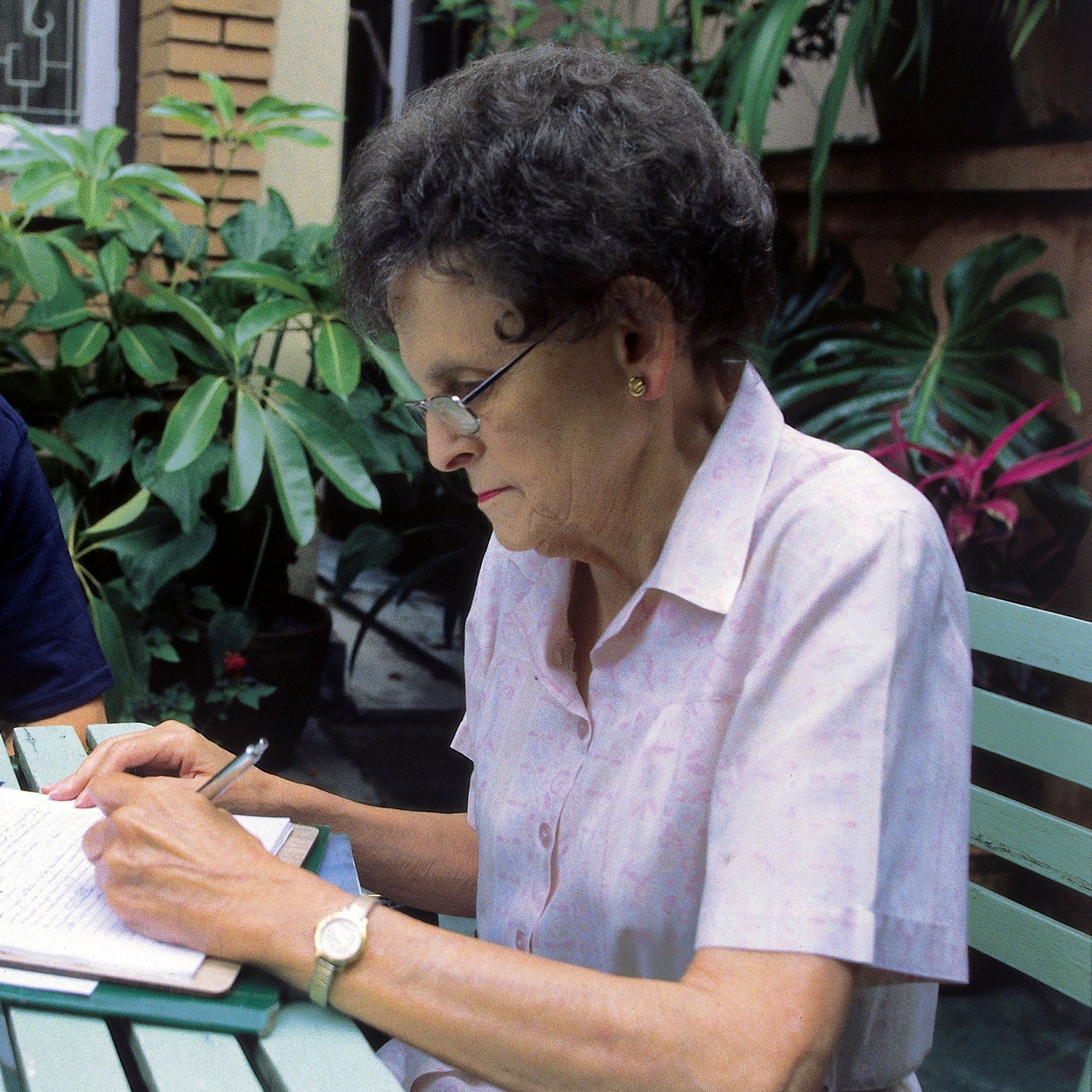She stalked mountaineers at the arrival gates of KathmanduÔÇÖs tiny airport, paid guesthouse receptionists for tips on the climbersÔÇÖ whereabouts, and pestered guide companies to divulge schedules.
Since 1960, Elizabeth HawleyÔÇöa tenacious, exacting Kathmandu-based journalistÔÇöinterviewed virtually every high-altitude climber to pass through the city, sussing out whether their claims were true and using her notes to create the sportÔÇÖs most thorough record, called the Himalayan Database.╠ř
She passed away Thursday afternoon at the age of 94. Climbers, colleagues, and friends around the world mourn her loss and remember┬á┬áher fondly.╠ř
ÔÇťAt age 91, she was still getting into her baby blue VW bug and going to hotels and grilling climbers,ÔÇŁ Mount Everest blogger Alan Arnette told ║┌┴¤│ď╣¤═°. ÔÇťShe kept a lot of people honest.ÔÇŁ
Kunda Dixit, now the editor of the Nepali Times, filled in for Hawley as a stringer in the 1980s. ÔÇťLiz didnÔÇÖt suffer fools, she wanted everyone to meet her exacting standards,ÔÇŁ he says. ÔÇťAs a rookie journalist, I couldnÔÇÖt have wished for a more effective mentor.ÔÇŁ
Ang Tshering Sherpa, the former president of the Nepal Mountaineering Association, recalled how Hawley was more than a┬átough reporter. She once┬áhelped his team save a climber trapped on Mount Everest. ÔÇťIn the middle of the night, she was in touch with us, providing valuable suggestions on how we could rescue him,ÔÇŁ says┬áAng Tshering.╠ř
Journalist┬áBilli Bierling, HawleyÔÇÖs assistant, originally intended to work for Hawley for a year. Instead she stayed for 14. ÔÇťIÔÇÖm gutted,ÔÇŁ she said from the Dubai airport, en route to Kathmandu.
ItÔÇÖs hard to imagine what Hawley would think of all this. Those who knew her remember a woman not given to sentimentality. She was born in New York City in 1923. After she received her master's from the University of Michigan, Hawley became a researcher at Fortune magazine, but couldnÔÇÖt imagine a future there. In 1957, she quit to travel the worldÔÇövisiting places like Algeria, India, Hong Kong, and, of course, Nepal. Upon returning to New York, she had an epiphany. Kathmandu┬áwasnÔÇÖt just more ÔÇťreal.ÔÇŁ It┬áwas also more comfortable, pleasant, and fun. She returned to the city with assignments from Time magazine and Reuters, and promptly established herself as a correspondent.
Even though she lived at the base of the biggest mountains on the planet, she didnÔÇÖt┬ádesire to test her human-endurance limits. She rarely, if ever, trekked. She was too busy working.
A story of hers about the death of NepalÔÇÖs prime minister made the front page of The New York Times.╠řBig, newsworthy expeditions started arriving in the 1960s. Thirty years later,┬áthe number of climbers had skyrocketed. She occasionally found herself in the middle of controversies, such as the 1996 disaster chronicled by┬áJon Krakauer┬áin his best-selling book Into Thin Air.╠ř(ÔÇťJon Krakauer, he was very kind, very patient, spent a long time with me,ÔÇŁ she once said.)┬áA small group of assistants and supporters joined her in Kathmandu, including Richard Salisbury, a retired climber and computer whiz from Ann Arbor, Michigan, who digitized and catalogued HawleyÔÇÖs room full of files.╠ř
She spent much┬áof her time in the city reporting, using up┬ásignificant chunks of her not-large income to do so. Her beloved VW Beetle became a fixture in the city. As I┬ánoted in my┬á2011 profile of Hawley┬áfor this magazine, her information came to be relied upon by┬ánewswires, scholars, the Nepal Mountaineering Association, the American Alpine Journal, European climbing publications, and the worldÔÇÖs best mountaineers. ÔÇťIf I need information about climbing 8,000-meter peaks, I go to her,ÔÇŁ Italian climbing legend Reinhold Messner told me.
One day, when she was in her 70s, she realized she was struggling to gauge distances, so she handed over her license, quit her favorite pastime, and hired a driver. Her career as a chronicler┬áended just as decisively. In the middle of an interview a year and a half ago, her mind went blank, HawleyÔÇÖs assistant┬áBierling said, something that had never happened before. Hawley quit conducting interviews shortly thereafter.╠ř
She held others to high┬ástandards, and she wasnÔÇÖt going to lower them for herself. Nor┬áwould she┬áindulge in nostalgia. Bierling recalled asking her what it felt like to give up working on the Himalayan Database, something she was clearly so passionate about.
ÔÇťPassionate? IÔÇÖm not passionate about anything, certainly not a database,ÔÇŁ said Hawley.
So why then did she carry on for so long?  
ÔÇťI started something,ÔÇŁ she said. ÔÇťAnd whenever I start something, I finish it.ÔÇŁ


